Over the years I have installed countless PIR sensors throughout buildings as customers look for ways to reduce energy consumption and do their bit for the planet – not to mention their wallets. Despite their numerous benefits, there are a few common issues that I am called in to repair, such as a customer asking why their PIR sensor is constantly triggering.
The widespread adoption of PIR sensors to control lighting is great, but not so great when the constant triggering of your external light is keeping you awake at night (as happened to me two nights ago!) This post will run through some of the common causes to help you troubleshoot your faulty PIR and how you can get it sorted!
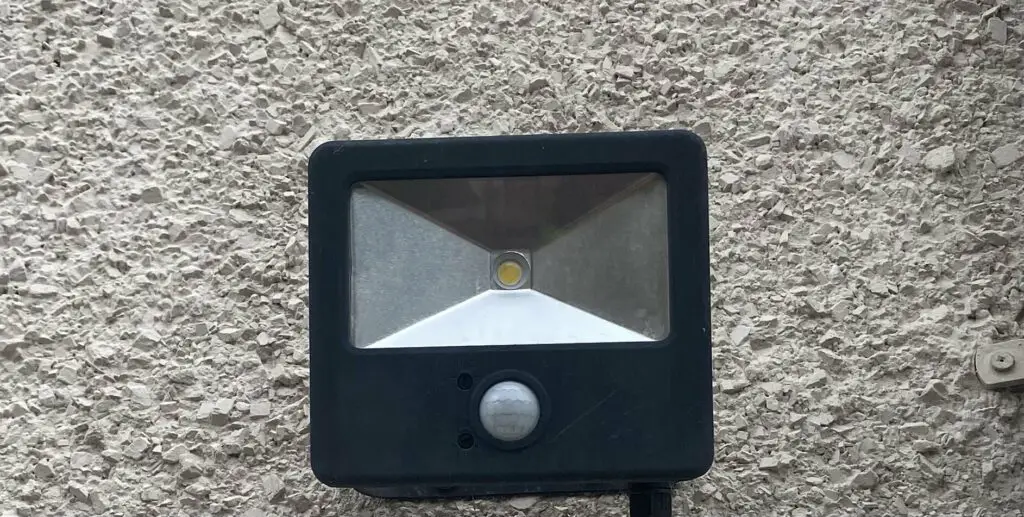
The best solution to a constantly triggering PIR sensor is to adjust the lux level and sensitivity settings found on the sensor. If this fails to solve the problem try repositioning the sensor or one of the other solutions detailed below.
The Technology Behind a PIR Sensor
Let us briefly look at the technology behind a PIR sensor to help understand what could be going wrong. Remember though, I am just a lowly electrician so this is just my basic understanding, I am sure an electronics wizz would do a much better job explaining it than I can (Tom Scott if you are reading this?)
A PIR (Passive Infrared) sensor detects the presence of a warm body in its field of view. It does this by detecting changes in infrared radiation emitted by objects in its detection area. This detection area is important to note and one of the most common faults we shall come to later.
PIR sensors consist of two main components:
- A pyroelectric sensor that is made of a thin layer of pyroelectric material, which generates a small electrical charge when exposed to infrared radiation.
- A circuit board that is responsible for processing the electrical signal generated by the pyroelectric sensor and triggering the light to switch on.
When a warm body enters the detection area of the PIR sensor, the temperature of the pyroelectric material changes, causing it to generate an electrical charge. This electrical charge is processed by the circuit board (for reasons way above my limited understanding) that then causes the light to activate.
A downside of PIR sensors is that they can only detect changes in infrared radiation, and are unable to detect the actual presence of an object. Whilst they do a great job at detecting the movement of warm objects, such as humans or animals, when it comes to detecting the presence of inanimate objects or cold-blooded animals they fall short.
Another point worth mentioning is that there are other types of motion sensors that we install to control lighting. Many business customers opt for the pricier but more expensive option of microwave motion detectors. I’ve not come across these in domestic instances yet, but I’m sure it’s only a matter of time.
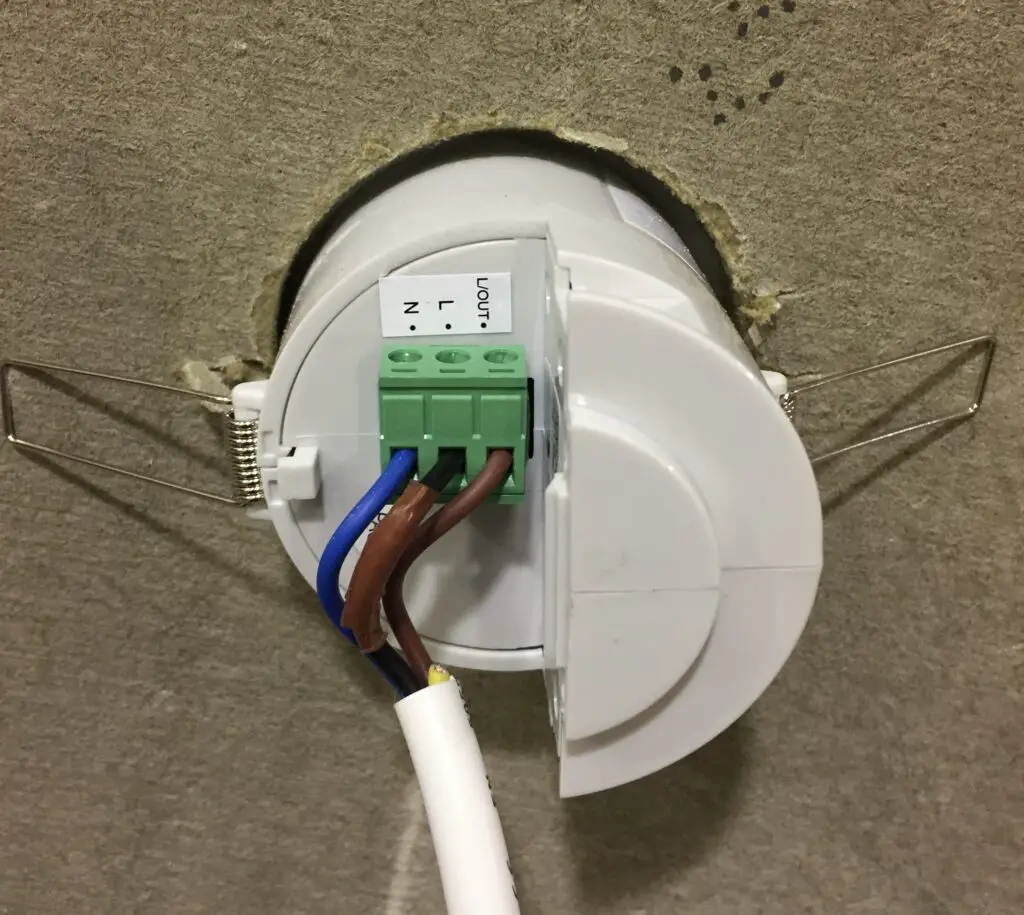
Common Causes of Over-Sensitivity in PIR Sensors
Now we all have a very surface-level understanding of the technology behind a PIR sensor, let’s all agree we don’t really understand electronic circuitry and look at real-world issues as to why the PIR sensor may be constantly triggering!
PIR Placement and Alignment Issues are the Most Common Cause of PIR Sensors Constantly Triggering
In my experience, the alignment and placement of the PIR are the number one reason it is not performing as you would expect. The field of vision we mentioned earlier has a great impact here. I’ve also come to learn that not all PIR sensors are created equal and like most things you kind of get what you pay for when comparing PIRs so that’s worth bearing in mind.
The main issues I see with PIR sensors either not triggering or constantly triggering are:
Improper Height
PIR sensors should be placed at an appropriate height. For example, for an outside light, the sensor should be mounted at a height of around 2.5 to 3.5 metres from the ground. When we are high up we have a better all-around field of vision. The same is true for PIRs. Beware though, if it is too high it may be picking up unwanted activity in the neighbour’s garden for example.
Obstructions
This may be an obvious one, but obstructions to the field of view have a huge impact on a PIRs ability to perform. For example, garden sheds can cause a lot of problems it may partially obstruct so sometimes the PIR triggers and sometimes it does not.
Angle of Detection
As mentioned PIR sensors have a limited detection range and angle. Facing directly onto the walkway often isn’t the best angle. Warm objects walking across its field of vision are the easiest to detect. Consider adjusting the angle of the PIR to rule out that it isn’t constantly being triggered by a warm object on either side.
Reflective Surfaces
Reflective surfaces such as mirrors or glass can reflect infrared radiation and cause false alarms. It’s worth checking that the PIR isn’t picking up movement, or reflective heat, from an adjacent window for example.
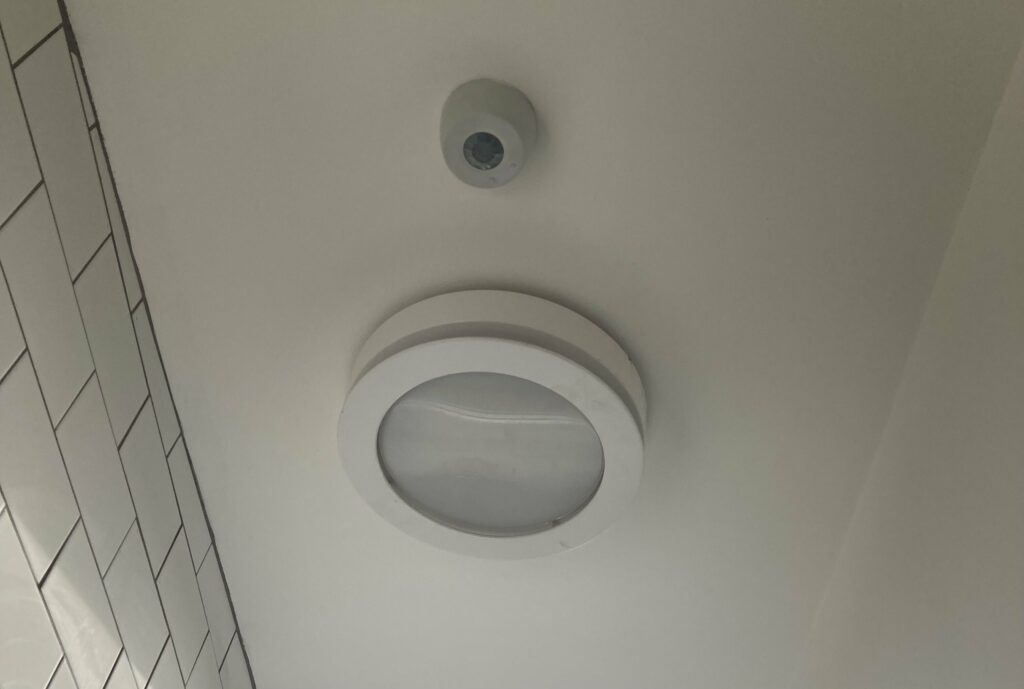
Interference from Other Light Sources can Cause PIR Sensors to Trigger Unintentionally
It is possible for PIR sensors to be triggered by light sources other than the infrared radiation emitted by warm objects. Light sources that emit infrared radiation in the same wavelength range as PIR sensors can cause interference and trigger the sensor.
If a PIR sensor is placed near a window that receives direct sunlight, the sensor can be triggered by the infrared radiation emitted by the sun. Most outdoor lights have a setting that allows for the adjustment of the brightness (ie so that they don’t come on in daylight). Adjusting this setting may help reduce sensitivity and override the lights’ desire to come on due to the sun’s infrared radiation.
During research for this post, I discovered that some indoor lighting sources also emit infrared radiation, such as halogen lamps, incandescent bulbs, and some LED lights. This is not a cause I have diagnosed in the real world as falsely triggering a PIR but is one I shall start to check on.
The most practical advice I can give to resolve the above issues is to adjust the sensitivity settings on the PIR sensor. These usually take the form of small screws within the fitting that need a screwdriver in order to turn (see image below) Try adjusting these to make the PIR less sensitive and see if that solves the problem.
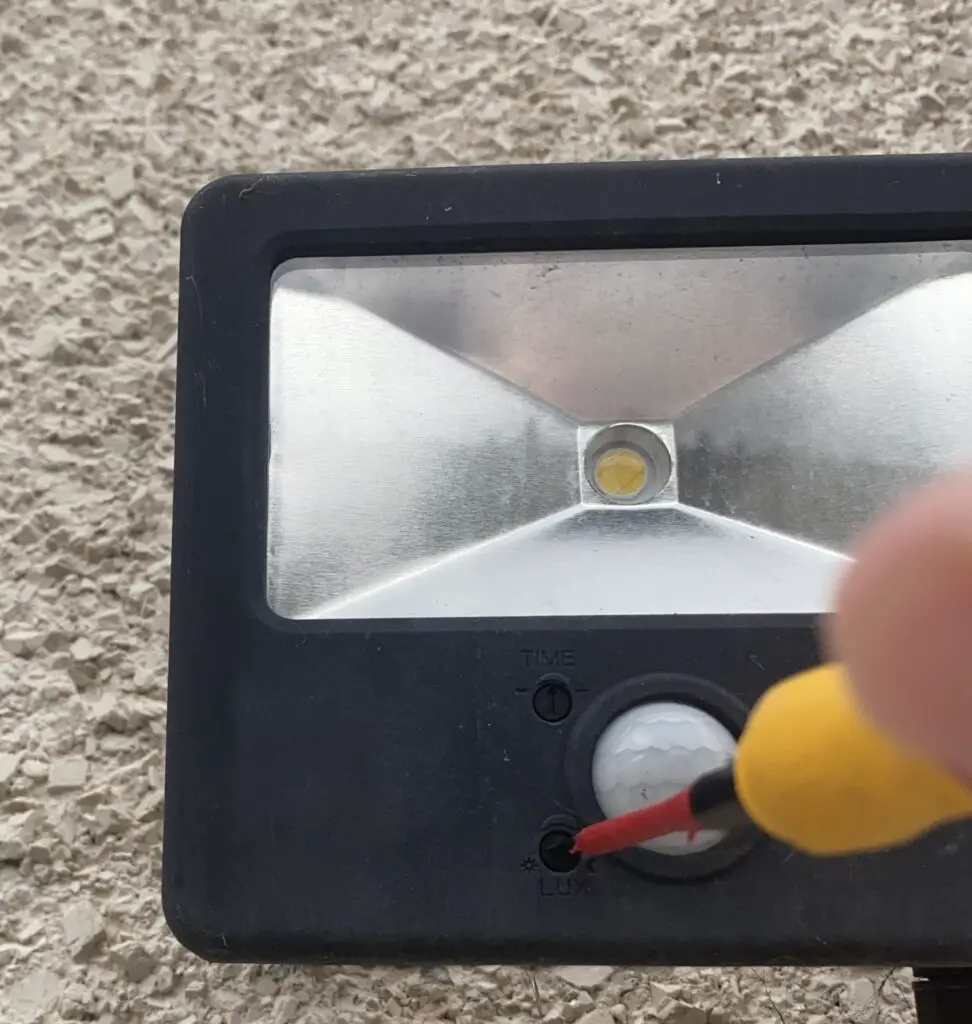
Dealing With Unwanted Moving Objects Constantly Activating PIR Sensors
PIRs do a great job of activating my outside light when I come home late in the evening after a hard day at work (I can hear the violins playing already) The downside is that it cannot detect the difference between me, a human who wants the light to come on, and an animal, such as the cats that like to hang out in my back garden at night.
Unfortunately, it’s not just the unwanted, but adorable, cats that make my backyard home at night causing the PIR sensor to trigger, other common animals could also be the culprit behind the motion sensor constantly triggering.
Insects
Flying insects such as moths or flies can sometimes trigger a PIR sensor, particularly if they are attracted to a light source near the sensor. This includes things like spiders that may have made inside the light, and around the sensor, their home.
Small Animals, Rodents and Birds
I mentioned cats but smaller animals such as rodents or birds can sometimes trigger a PIR sensor. This is especially true if they are moving quickly or in large numbers.
Falling Leaves or Branches
In windy conditions, falling, or simply heavy movement, of leaves or branches, can move across the detection area of a PIR sensor, causing it to trigger.
Moving Shadows
Moving shadows cast by objects such as trees or passing vehicles can sometimes trigger a PIR sensor, particularly if they are moving across the detection area in a way that simulates the movement of a warm-bodied object.
Changes in Temperature
Changes in temperature, such as those caused by the sun warming up a particular area or a cloud passing overhead, can sometimes cause a PIR sensor to trigger. Again, the setting to prevent an outside light from activating during the day is a good place to start to diagnose this problem.
Addressing Wiring and Connection Problems that cause PIR Sensors to Constantly Activate
I wanted to put the other common causes first as these are things that home and business owners can address themselves without the need to call in a local electrician. When it comes to wiring problems these are best handled by electrcians.
That being said, in my experience, if a PIR sensor has relatively straightforward wiring. The clever stuff is done by the internal technology of the sensor itself. If other options have been ruled out and an electrician has been called in, chances are that the PIR sensor is faulty and they will replace the whole thing (plus check the wiring connections to ensure all is good there)
Is It Better to Replace a Faulty PIR Sensor that Constantly Triggers or Replace the Whole Light?
We should start by saying that PIR sensors can either be internal to the light fitting or externally fitted. If the PIR is external to the fitting and it is determined to be faulty, the electrician will just replace the external PIR sensor.
My guess is that most people reading this will be doing so because their external light with a built-in PIR sensor is faulty, like the one in my photos. This is a more tricky situation.
It is possible to replace just a PIR sensor. Amazon carries a wide range of PIRs so it may be possible to find a replacement. However, the fix is unlikely to be a plug-and-play solution. this can lead to a lot of fuss and time being spent.
Most electrcians would opt to replace the whole light fitting rather than try and change just the PIR sensor, this is true in most domestic cases, big commercial lighting is much more expensive so it becomes more economically viable to carry out the repair by changing just the PIR.
I hate advising that we throw items away and just replace them, but at the same time in the interests of safety, I can’t advise that people start messing around with their own electrics and start removing and trying to repair lights. When PIR-controlled lights are available on places like amazon for low cost, it makes more financial sense for the electrician to bring a new PIR sensor-controlled light with them when they turn up, replace it there and then, test it all and go again, with minimal fuss.
Before finishing up, it’s worth mentioning electrical interference as a potential cause of a PIR constantly triggering. Although this is not a problem I have come across in my real-world life as an electrician, it is still an interesting potential cause to look at in my opinion
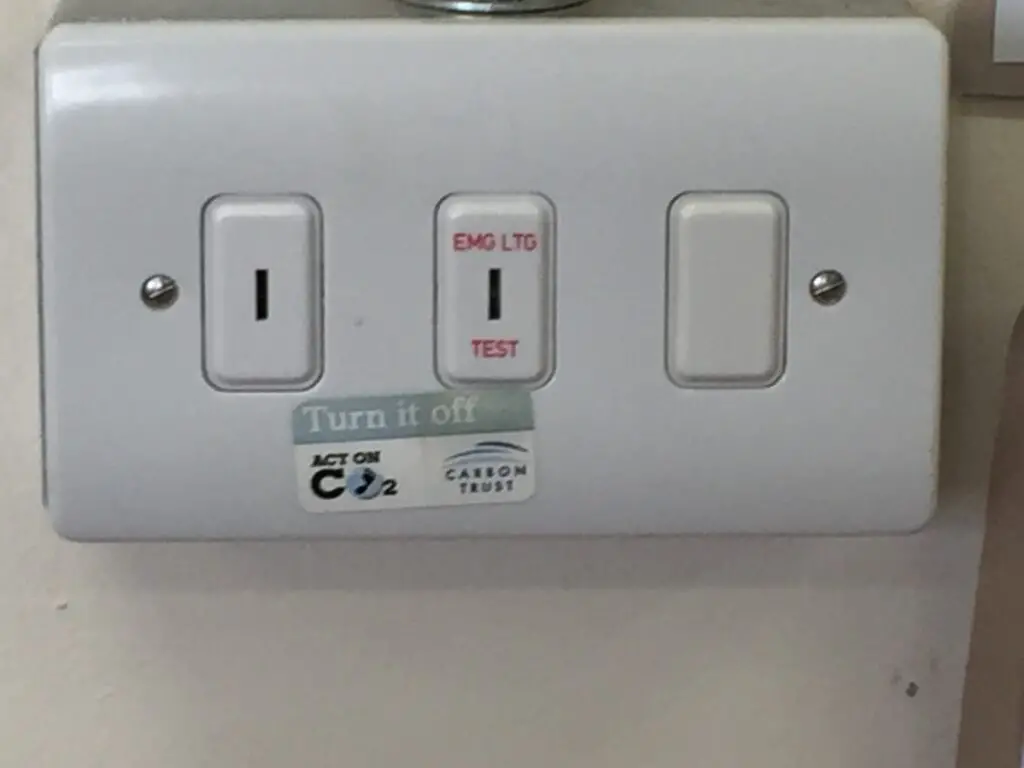
The Less Likely Radio Electrical Interference Problem Causing PIR Sensor to Constantly Trigger
It is possible that electrical interference is affecting the performance of your PIR sensor, causing false triggering or missed detections. There are several sources of electrical interference that could be the culprit, so worth double-checking.
Radio Frequency Interference (RFI)
Radio frequency interference can occur when radio waves from nearby transmitters or electrical equipment interfere with the PIR sensor’s circuitry. Pinpointing this is going to be hard and I would assume (perhaps incorrectly) that other sensitive electronics in the home would also be malfunctioning.
Electromagnetic Interference (EMI)
EMI can occur when electromagnetic fields generated by electrical equipment or appliances interfere with the PIR sensor’s circuitry. Electrical equipment such as voltage transformers sit on housing estates and around businesses. It may be possible if this is close by, that it is interfering with the PIR sensor.
Voltage Fluctuations
Voltage fluctuations are a part of the electrical system. The voltage never stays at exactly the same level. The distribution network does a great job at maintaining levels in the realm where customers do not notice.
That being said, as PIR sensors are sensitive to changes in voltage, and fluctuations in the power supply, if there is a fault in your system it may be causing the problem. An electrician would be required to investigate this problem, and this cause would sit lower down on the likely hood hierarchy of faults.
That pretty much covers the reasons why a lighting motion sensor is constantly triggering. We have lots more articles covering all things electrician related on the site so please hang around for a while!
